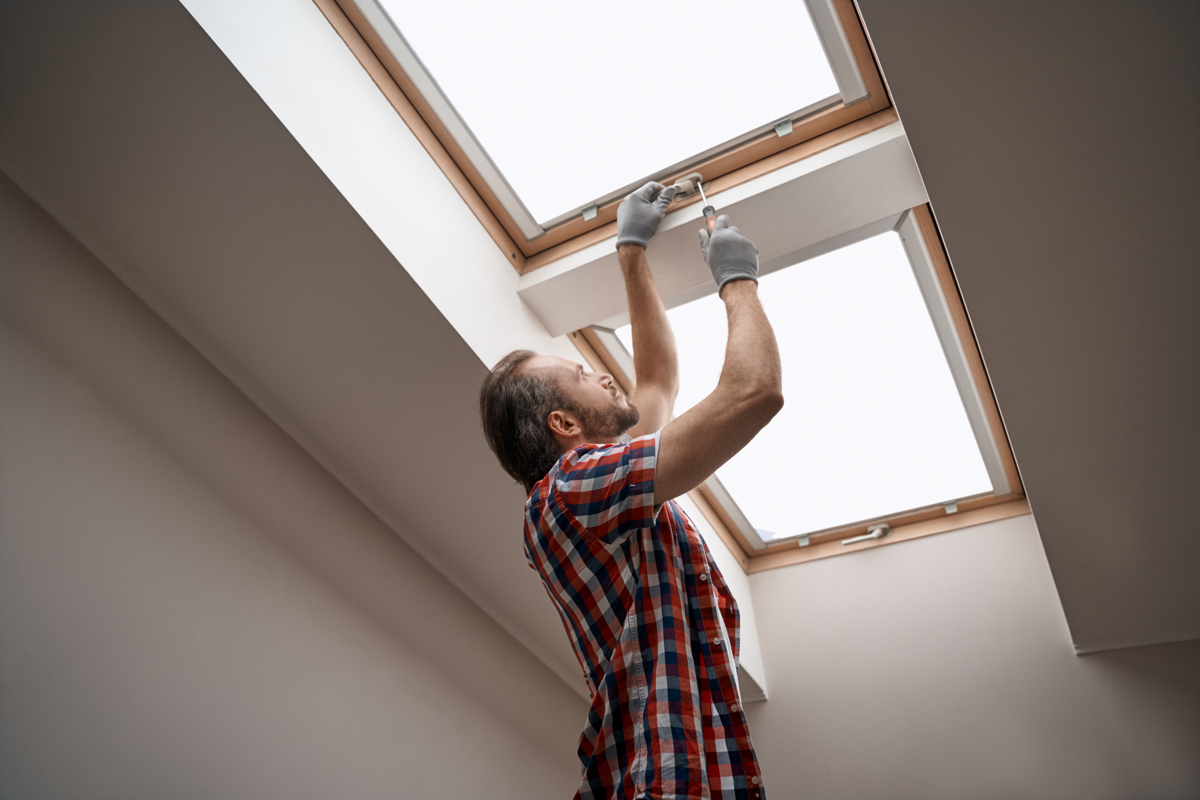The lifespan of a skylight can vary depending on several factors, including the type of skylight, the materials used, the climate, and the level of maintenance. Generally, skylights do not need to be replaced often, but they may require replacement after a period of time due to wear and tear or damage. Here’s a breakdown of when you might need to replace your skylight:
1. Typical Lifespan of Skylights
- Standard Skylights: Most traditional skylights (e.g., acrylic, polycarbonate, or glass) last about 15 to 20 years. However, the lifespan can be influenced by exposure to UV rays, temperature fluctuations, and environmental conditions.
- High-Quality Skylights: Skylights made of high-quality materials like tempered glass or those with advanced weather-resistant coatings can last 20-30 years or longer with proper care.
2. Factors Affecting Skylight Replacement
-
Materials Used:
- Acrylic and Polycarbonate Skylights: These materials can degrade more quickly over time, especially if exposed to UV rays and extreme temperatures. Typically, they may last between 10-20 years.
- Glass Skylights: Glass tends to be more durable and long-lasting. High-quality glass skylights can last 20-30 years with proper maintenance.
-
Climate and Environmental Conditions:
- Extreme Weather: Areas that experience harsh weather conditions (strong winds, heavy snow, hail, intense UV exposure, etc.) may shorten the lifespan of a skylight. If you live in such areas, your skylight might need replacement sooner.
- Coastal Areas: Saltwater exposure can also cause damage, especially to metal components and seals.
-
Maintenance and Care: Proper care can extend the life of your skylight. Regular cleaning and inspection for leaks or other damage can help identify small issues before they become major problems.
3. Signs That Your Skylight Needs to Be Replaced
Here are some common signs that may indicate your skylight needs replacement:
- Leaks or Water Damage: If you notice water stains on your ceiling or walls beneath the skylight, it’s a sign of leakage, which could be due to a faulty seal or damage to the skylight itself.
- Condensation Between Panes: For double-glazed skylights, condensation between the panes can indicate that the seal has broken and the skylight is no longer energy-efficient.
- Cracks or Chips: Visible cracks, chips, or damage to the skylight’s glazing (acrylic, glass, or polycarbonate) may allow water to enter and air to escape, affecting both insulation and safety.
- Yellowing or Clouding: Skylights made of acrylic or polycarbonate may become yellowed or clouded over time, reducing the amount of natural light they allow in and diminishing their aesthetic appeal.
- Increased Energy Bills: If your skylight isn’t properly sealed or is cracked, it may be letting in hot or cold air, which could increase heating or cooling costs.
- Warping or Misalignment: If the skylight frame becomes warped or misaligned, it may no longer fit properly and could be prone to leaks or air gaps.
4. How to Extend the Lifespan of Your Skylight
To avoid early replacement, regular maintenance is key:
- Clean the Skylight: Regularly remove dirt, leaves, and debris from the skylight to prevent damage and maintain its transparency.
- Inspect for Leaks: Regularly check around the skylight’s seals and flashing to ensure there are no leaks.
- Check for Seal Integrity: Inspect the seals for wear and replace them if necessary. This helps prevent leaks and energy loss.
- Professional Inspections: Consider having your skylight professionally inspected every few years, especially if it’s an older installation.
Conclusion
In general, skylights typically need to be replaced every 15-30 years, depending on the material, environmental conditions, and how well they’ve been maintained. If you notice signs of damage, such as leaks, cracks, or poor energy efficiency, it’s important to address the issue quickly to avoid further damage. Regular maintenance and prompt repairs can significantly extend the lifespan of your skylight.
Solar Fan Installation In The East Valley
Elite Home Daylighting Systems offers tubular skylights and solar attic fan installation services to the entire Phoenix east valley. Service area includes Chandler, Gilbert, Mesa, Tempe & more! Contact us for a free quote today!
More Articles About Solar Tubes
- Why Go Solar In Arizona?
- How To Remove A Skylight
- Best Skylight Ideas For Your Home
- Roof Window Vs Skylight
- Solar Attic Fan Installation Cost
- 5 Benefits Of Sunlight Through Windows
- How Much Does It Cost To Install A Skylight?
- Sun Tunnel Vs Skylight
- Skylight Dome Replacement Guide
- Skylights Replacement Cost
- Skylights Near Me In East Valley Phoenix
- How Long Do Skylights Last
- Do Solar Attic Fans Work
- How To Clean Skylights In 5 Steps
- Everything You Need To Know About Solar Fans
- How To Install Solar Attic Fan
- Skylights Vs Solar Tubes: Costs, Pros And Cons
- How Much Do Solar Tubes Cost?
- 6 Easy Ways To Lower Your Electric Bill In Arizona
- Solar Attic Fans Pros And Cons
- Tubular Skylights Pros And Cons




